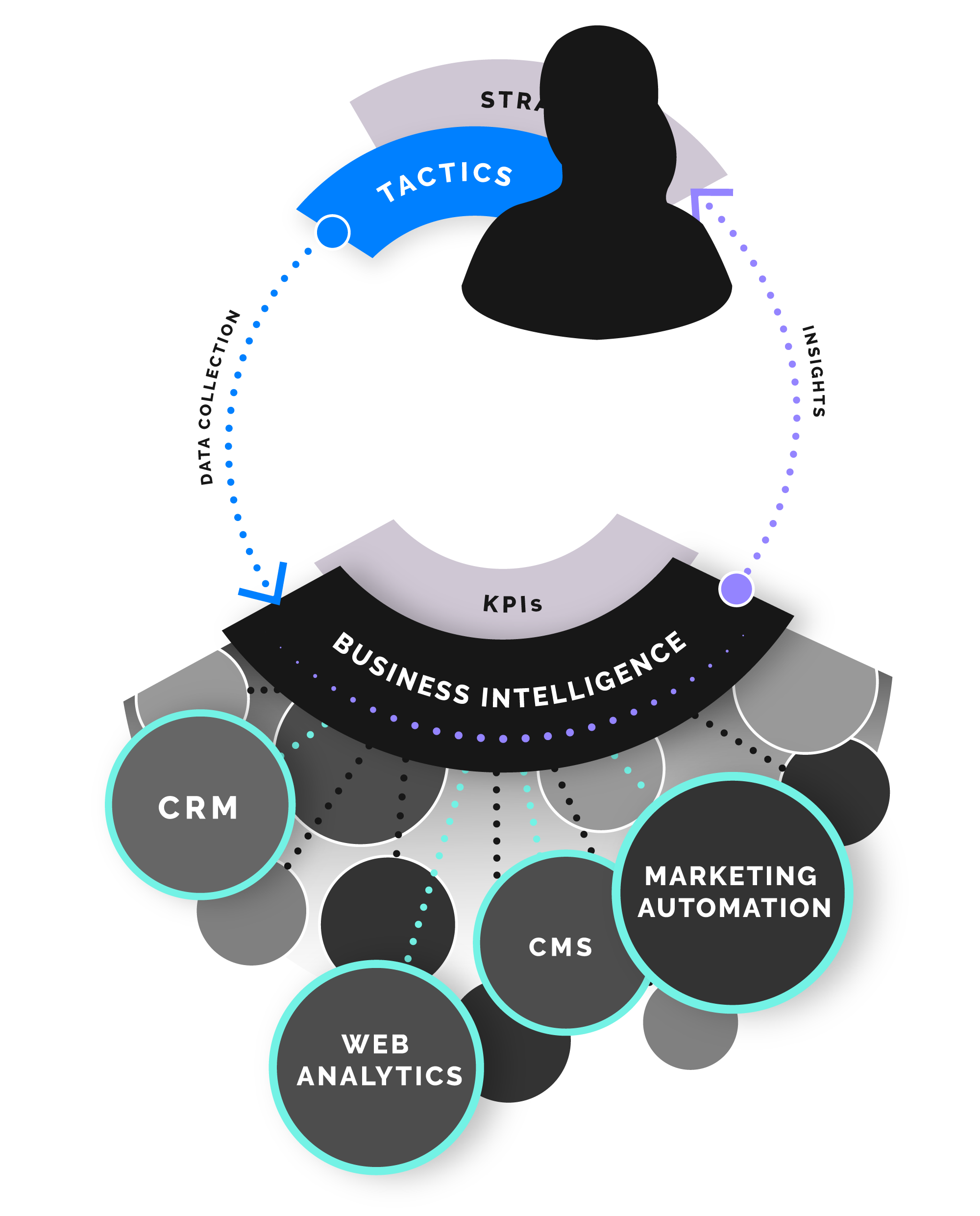The Relationship Between Strategy and Technology
The Relationship Between Strategy and Technology
Karina Schuelke | Director of Digital Strategy
February 9, 2021
Your tech stack is critical to the success of your organization.
In a digital world, technology and tech-enabled real-world experiences are the mediators between your audience and your organization. Even 1-1 interactions often happen through technology - email, video conferencing, chat support. In this world, your technology choices matter intensely. How do the disparate pieces of your stack work together to create a great experience for your audience? How does your stack enable your employees? Ultimately, does your tech stack empower your business to achieve its aims?
Your technology is often not included in the same conversations as strategy and goal setting. Technology usually comes later, or not until someone tries to execute a strategy and realizes how difficult it will be with current security requirements, available compatible technologies, or siloed tools used by multiple teams.

Technology needs and constraints are a critical input of any strategic planning. With so many people - your customers and donors, your patients and constituents, your investors and employees - directly experiencing your brand through the technologies you select and partly based on how seamless that experience is for them, planning your strategy without these critical technology inputs is like planning a trip to the beach and forgetting about transportation.
In a digital world, technology - what you select and how you use it - has a direct connection to human needs. It impacts the same humans you seek to serve with your products and services.
Technology can help you achieve your business aims in dramatic fashion or it can get in the way. Dramatically.
This is what can happen when technology is disconnected from strategy (and what changes when you make that connection)
Scenario 1 | Technology Disconnected from Strategy
One organization acquires another. A new marketing team forms out of the two organizations. With two different websites, two different marketing automation systems, and two different instances of the same CRM, the new team has a problem as they look to work together. We all know how this could go: the team fights about which technologies they should keep and which should go, keeps their tools sort of separate, employees bounce back and forth between multiple tools all day long, teams use different words for the same things, and so on. Preferences, turf wars, entrenched habits, and more create chaos and confusion that will absolutely translate to the customer experience and, in extreme cases, make it incredibly difficult to execute on any strategy at all.
Scenario 2 | The Change - Technology Connected to Strategy
But what if something different happens?
Now, let’s assume that the new team is aware of organizational goals and the part they have to play in achieving those goals. Together with their leadership, they have a chance to determine their tactics and path to the goals. They and their leadership have a chance to determine how they will get there, set their own goals and their own tactics.
Is technology part of this conversation? Of course it is. If the team is working together on these questions, the voices in the room responsible for the technology will bring it up. But the conversation is different - instead of “mine vs. yours” it’s about the goals of the organization and the goals of the team. The focus has changed to “us against the problem.” By itself, this isn’t a panacea for all the changes and needs to be addressed in this scenario, but it will eliminate a lot of strife by bringing the two teams to tackle the problem together, ultimately working towards a solution that will turn their unified employee experience into a unified customer experience.

The global pandemic and economic fallout upended even the most risk-proof strategies which means 2021 is likely the most critical year in your business life. Aligning your technologies and goals is imperative not only to your success, but also likely to your survival.
We hope you enjoyed reading the Phase2 blog! Please subscribe below for regular updates and industry insights.


